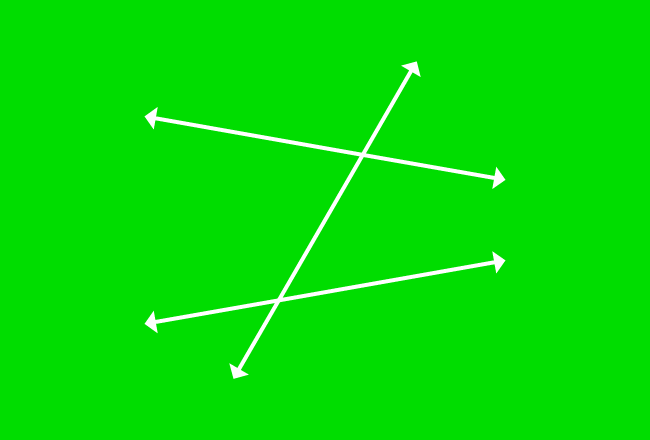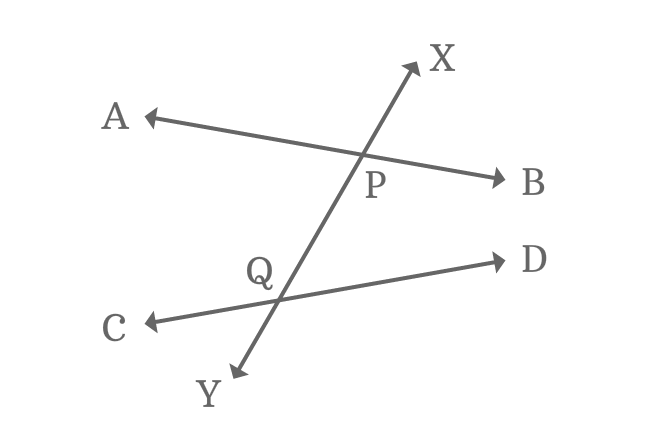
When two or more nonparallel lines are intersected by their transversal, the exterior angles which appear opposite sides on the transversal are called exterior alternate angles or alternate exterior angles of nonparallel lines and their transversal.
Total two pairs of exterior angles are formed on opposite sides at the intersection of two nonparallel lines and their transversal. Therefore, the two pairs of exterior angles are called exterior alternate angles or alternate exterior angles.

The intersection of two nonparallel lines ($\overleftrightarrow{AB}$ and $\overleftrightarrow{CD}$) by their transversal $\overleftrightarrow{XY}$ formed four exterior angles geometrically known as $\angle APX$, $\angle XPB$, $\angle DQY$ and $\angle YQC$.
$(1) \,\,\,\,\,\,$ $\angle APX$ and $\angle DQY$
$(2) \,\,\,\,\,\,$ $\angle XPB$ and $\angle YQC$
The above two pairs of angles are exterior angles and appear at opposite sides of the intersection of nonparallel lines and their transversal line. Therefore, every pair of exterior angels are called as alternate exterior angles.
In this case, the alternate exterior angles are not equal because of the involvement of nonparallel lines in the intersection with their transversal.
$(1) \,\,\,\,\,\,$ $\angle APX \ne \angle DQY$
$(2) \,\,\,\,\,\,$ $\angle XPB \ne \angle YQC$
A free math education service for students to learn every math concept easily, for teachers to teach mathematics understandably and for mathematicians to share their maths researching projects.
Copyright © 2012 - 2023 Math Doubts, All Rights Reserved